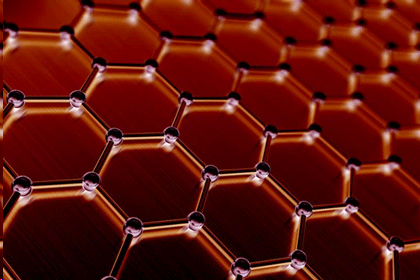|
NOVIDADES
Graphene has shown significant promise—with potential applications in the biomedical, electrical, energy, and environmental spaces—and success has been seen in many small-scale applications. But scaling up the production of graphene-based materials is problematic, and potentially dangerous, because graphene oxide, a flake-like intermediate for making graphene from graphite has been proven to possess a fire hazard. Ryan Tian, associate professor of inorganic chemistry, and his team at the University of Arkansas set out to solve this problem. “We started researching graphene about five years ago and realized that the entire field is talking about graphene’s flammability,” said Tian in an exclusive interview with R&D Magazine. “Graphene oxide once it becomes airborne is extremely explosive. I can tell from my industry experience in production lines that if anything potentially flammable is there, and once it becomes airborne it can be explosive, than the industry always hesitates to do it.”  Graphene Using metal ions with three or more positive charges, researchers in Tian’s laboratory bonded graphene-oxide flakes into a transparent membrane. This new form of carbon-polymer sheet is flexible, nontoxic and mechanically strong, in addition to being non-flammable. The research was published in The Journal of Physical Chemistry. The Journal of Physical Chemistry describes the process in more detail: “This work reports a simple and facile method to cross-link the GO with Al3+ cations, in one step, into a freestanding flexible membrane. This inorganic membrane resists in-air burning on an open flame, at which non-cross-linked GO was burnt out within ~5 s. All characterization data suggested that the in situ “epoxy ring-opening” reactions on the GO surface facilitated the cross-linking, which elucidated a new mechanism for the generalized inorganic polymerization. With the much improved thermal and water stabilities, the cross-linked GO film can help to advance high-temperature fuel cells, electronic packaging, etc. as one of the long-sought inorganic polymers known to date.” Using this method, graphene is less likely to cause trouble in the future of graphene-based materials production, its disposal and its environmental impact, said Tian. “This technology and the material we don’t need to worry about anymore, because by converting graphene polymer to graphene-oxide flakes in a liquid phase water solution, we can do the cross linking in the water,” he said. “We can harvest the materials, not as a chunk, but cross-linked into a free-standing membrane, foil type so that the material has much stronger mechanical properties than before when it was non-cross linked. This essentially opens the door widely to all applications. One potential application is to use graphene, developed using this non-flammable technique, to create an energy-efficient window coating that would bring down heating and cooling costs. “If each pane is covered by graphene, which is very thin and transparent, nearly colorless all kind of properties would be generated and a new building window would be very cool. It can conduct heat and conduct a charge and save energy for cooling and heating,” said Tian. Several academia labs in Arkansas and elsewhere are already in the process of forming a small consortium to better understand the heating and cooling advantage of graphene. There are many more applications, said Tian. “We can expect that future automobile and airplane windows will be much smarter than currently, and there are night vision applications,” said Tian. “After window coating, row to row printing, wearable electronics, optical, electromagnetic, sensor-based devices, and electronic optics have potential; we see all kinds of possibilities.” The R&D Daily. Posted: May 18, 2017. Assuntos Conexos: |
|||||||||||||||||||||||||